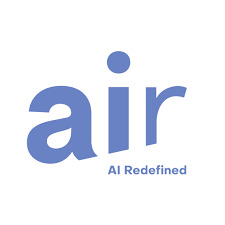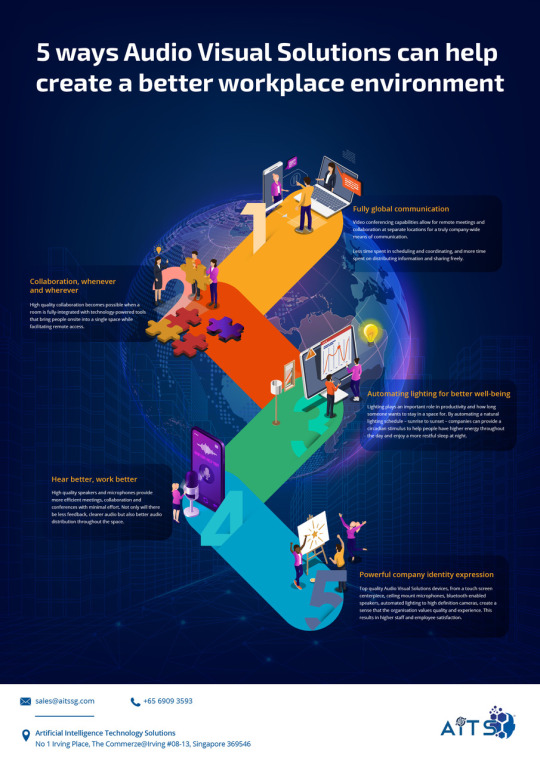#AI solutions
Text
GUIDE FOR CONSULTING SERVICES USING ARTIFICIAL INTELLIGENCE

In a recent project using AI for a real estate management and sales company, it became a laboratory for consulting and breaking down resistance to the lack of culture and benchmarks in the local market to compare the use of technology and pricing.
As much as we have technical experience, every day we are surprised by new things and unusual demands, which we have to learn and adapt to because we are consultants and we have to live with all the differences with professionalism.
After this successful experience, I decided to write a guide to help our employees and the market, because what counts at the end of the day are the state of the art, customer satisfaction and problem solving.
I'd like to point out that in the area of AI, as opposed to IT, we can apply 4 solutions, depending on the complexity of the problem: Use of Generative AI with prompts, Use of AI tools customizing the solution for a specific client, Use of NoCode to provide the solution and the development of applications with algorithms and AI technology combined.
The provision of AI consulting services faces significant challenges, but these can be overcome with the right strategies. Promoting an AI culture, adopting an efficient data management strategy, and transparency in the AI market are essential if companies are to make the most of this technology and achieve positive results in their operations.

CHALLENGES IN PROVIDING SERVICES USING ARTIFICIAL INTELLIGENCE (AI) FOR ENTERPRISES.
Lack of Culture
│ ├─ AI is a Very New Technology
│ └─ Majority of Enterprises Lack Culture and Knowledge
├─ Difference from IT
│ ├─ Data and Information Needs to be Cleaned
│ ├─ Data and Information Needs to be Recognized and Mastered
│ └─ AI will Use Data and Information to Create Solutions
└─ Lack of Market References
└─ No Standard Pricing for AI-based Solutions
Addressing the Challenges
├─ Lack of Culture
│ ├─ Educate Enterprises on Benefits of AI
│ ├─ Provide Proof-of-Concept Projects to Demonstrate AI Capabilities
│ └─ Develop AI Adoption Roadmaps for Enterprises
├─ Difference from IT
│ ├─ Emphasize Importance of Data Preparation and Curation
│ ├─ Highlight Need for Domain Expertise in AI Model Development
│ └─ Offer Data Engineering Services to Support AI Implementation
└─ Lack of Market References
├─ Research Competitor Pricing and Offerings
├─ Develop Transparent Pricing Models based on Project Scope
└─ Provide Detailed Proposals Outlining Solution Value and Pricing
Pricing Considerations
├─ Cost of Data Preparation and Curation
├─ Complexity of AI Model Development
├─ Ongoing Maintenance and Support Requirements
├─ Potential Business Impact and ROI for Enterprises
└─ Benchmarking Against Industry Standards and Competitors
Delivering Value with AI Consulting
├─ Understand Enterprise Pain Points and Objectives
├─ Tailor AI Solutions to Specific Business Needs
├─ Ensure Seamless Integration with Existing Systems
├─ Provide Comprehensive Training and Change Management
├─ Monitor and Optimize AI Models for Continuous Improvement
└─ Demonstrate Measurable Bus
LACK OF CULTURE
- AI is a Very New Technology: The rapid advancement of AI technology presents a unique challenge for enterprises, especially those new to the field. The novelty of AI means that many companies lack the foundational knowledge and understanding required to leverage its full potential.
- Majority of Enterprises Lack Culture and Knowledge: The absence of a culture that embraces AI within organizations hinders the adoption and effective utilization of AI technologies. This gap in knowledge and culture can lead to missed opportunities for innovation and efficiency gains.
Difference from IT
- Data and Information Needs to be Cleaned: Unlike traditional IT projects, AI projects require meticulous data cleaning and preparation. This process is crucial for training AI models accurately and efficiently, yet it is often underestimated in terms of time and resources.
- Data and Information Needs to be Recognized and Mastered: Beyond cleaning, recognizing and mastering the data and information used in AI projects is essential. This involves understanding the nuances of the data, its structure, and how it relates to the problem at hand, which is a skill set that may not be readily available within all organizations.
- AI will Use Data and Information to Create Solutions: The ultimate goal of AI projects is to use data and information to create intelligent solutions. However, achieving this requires a deep understanding of both the data and the AI technologies themselves, which can be a significant hurdle for organizations without the necessary expertise.
Lack of Market References
- No Standard Pricing for AI-based Solutions: The lack of established market references for pricing AI-based solutions complicates the procurement process for enterprises. Without clear benchmarks, it becomes challenging for companies to determine the fair value of AI services, leading to uncertainty and potential overpricing.
ADDRESSING THE CHALLENGES
Lack of Culture
- Educate Enterprises on Benefits of AI: Raising awareness and understanding of AI's benefits is crucial. This can be achieved through educational workshops, seminars, and training programs tailored to different levels of the organization.
- Provide Proof-of-Concept Projects to Demonstrate AI Capabilities: Demonstrating the tangible benefits of AI through proof-of-concept projects can help overcome resistance and foster a culture of innovation.
- Develop AI Adoption Roadmaps for Enterprises: Creating a structured plan for AI adoption can guide organizations through the process, ensuring they have a clear path to integrating AI into their operations.
Difference from IT
- Emphasize Importance of Data Preparation and Curation: Highlighting the importance of data preparation in AI projects can help organizations allocate the necessary resources and attention to this critical step.
- Highlight Need for Domain Expertise in AI Model Development: Recognizing the need for domain-specific expertise in AI model development can guide organizations in seeking out the right skills and partnerships.
- Offer Data Engineering Services to Support AI Implementation: Providing data engineering services can support organizations in preparing their data for AI, bridging the gap between data readiness and AI deployment.
Lack of Market References
- Research Competitor Pricing and Offerings: Conducting thorough research on competitor pricing and offerings can provide a basis for developing transparent and fair pricing models for AI services.
- Develop Transparent Pricing Models based on Project Scope: Creating pricing models that reflect the scope and complexity of AI projects can help ensure that enterprises receive value for money.
- Provide Detailed Proposals Outlining Solution Value and Pricing: Offering detailed proposals that clearly outline the value and pricing of AI solutions can enhance transparency and trust between service providers and their clients.
PRICING CONSIDERATIONS
- Cost of Data Preparation and Curation: The cost associated with preparing and curating data for AI projects should be considered in the overall pricing structure.
- Complexity of AI Model Development: The complexity of developing AI models, including the need for specialized expertise, should influence pricing.
- Ongoing Maintenance and Support Requirements: The ongoing maintenance and support required to keep AI models effective and up-to-date should be factored into pricing.
- Potential Business Impact and ROI for Enterprises: The potential return on investment (ROI) that AI solutions can offer should be considered in pricing, reflecting the value that AI can bring to businesses.
- Benchmarking Against Industry Standards and Competitors: Pricing should be benchmarked against industry standards and competitors to ensure fairness and competitiveness.
DELIVERING VALUE WITH AI CONSULTING
- Understand Enterprise Pain Points and Objectives: Gaining a deep understanding of the enterprise's pain points and objectives is crucial for tailoring AI solutions effectively.
- Tailor AI Solutions to Specific Business Needs: Customizing AI solutions to meet the specific needs of the business ensures that the solutions are relevant and impactful.
- Ensure Seamless Integration with Existing Systems: Integrating AI solutions seamlessly with existing systems is key to avoiding disruption and maximizing the benefits of AI.
- Provide Comprehensive Training and Change Management: Offering comprehensive training and change management support helps organizations adapt to new AI technologies and processes.
- Monitor and Optimize AI Models for Continuous Improvement: Regular monitoring and optimization of AI models ensure that they remain effective and aligned with evolving business needs.
- Demonstrate Measurable Business Impact: Showing measurable business impact through AI solutions helps justify the investment and fosters continued support for AI initiatives.
RDIDINI PROMPT ENGINEER

3 notes
·
View notes
Text
AI is becoming more and more important. It promises to make things more efficient, safe, and help us make better decisions. But sometimes people see AI as something bad or evil. Why?
I’ve been working in the AI field for 10 years.
Ethics. When AI makes decisions without human control, it raises questions about who's responsible if something goes wrong. If a self-driving car has an accident or a financial AI system causes a stock market crash, who should be blamed? This lack of clear rules makes people worry about AI's role in society.
Another concern is that it can be misused. There are worries about autonomous weapons or surveillance systems that invade our privacy. AI can also have biases that lead to unfairness and discrimination. These things can lead peeps to think that AI is a force that can harm us. (It is, but…)
Another reason is fear of the unknown. People are often scared of things they don't understand, and AI can be really complex. As AI becomes more advanced, it's harder for even the people who create it to understand everything about how it makes decisions. This makes some people worry that AI could become uncontrollable or have goals that are different from ours.
Idk the answers to this, just expressing thoughts.
#ai portraits#ai art generator#ai generated#ai image#aiartcommunity#ai essay writer#ai essay generator#ai is theft#ai is a plague#ai is stupid#ai is scary#ai is bad#ai is dangerous#ai is crazy#ai tools#ai robots#ai revolution#ai research#ai fashion#ai fun#ai software#ai solutions#ai ethics#ai expert#ai enhanced#ai experiments#ai art gallery#ai artist#ai art#ai girl
5 notes
·
View notes
Text

#AI solutions#web development#web developers#seo services#smm services#ppc services#financial services
4 notes
·
View notes
Text
In today's rapidly evolving business landscape, the integration of AI solutions has become indispensable for companies aiming to stay ahead of the curve. As we enter 2024, the demand for custom AI solutions is expected to soar, empowering businesses to unlock their true potential and drive enhanced productivity.
In this comprehensive guide, we will delve deep into the intricacies of custom AI solutions, shedding light on how they can revolutionise various industries and pave the way for future success. Whether you're a small startup or a multinational corporation, understanding the ins and outs of AI technology will be crucial to thriving in the digital age.
From chatbots and virtual assistants to predictive analytics and machine learning algorithms, we will explore the vast array of possibilities that custom AI solutions bring to the table. Discover how you can leverage these intelligent systems to streamline processes, boost efficiency, and gain a competitive edge.
For more visit : https://askgalore.com/custom-ai-developement-a-guide-for-businesses
0 notes
Text
AI Solutions Development Company: Transforming Businesses with Systimanx
#Systimanx, an #AIsolutionsdevelopmentcompany, empowers businesses with innovative AI-driven solutions, revolutionizing operations and enhancing productivity. Transform your business landscape with Systimanx's expertise in harnessing #AItechnologies for optimal efficiency and growth.
#ai development#ai developers#ai solutions#ai development company#ai development services#ai development solutions#technology
0 notes
Text
Unlocking the Potential of AI Solutions: A Comprehensive Guide
Introduction to AI Solutions
In the dynamic landscape of today's business world, AI solutions have emerged as a pivotal force driving innovation and efficiency. From streamlining processes to enhancing decision-making capabilities, the integration of artificial intelligence (AI) is reshaping industries across the globe. As businesses strive to stay ahead of the curve, leveraging AI services becomes imperative to unlock untapped potential and gain a competitive edge.
The Role of AI Development Services
Harnessing Cutting-Edge Technology
AI development services play a crucial role in translating vision into reality. By harnessing cutting-edge technology, these services empower businesses to create bespoke solutions tailored to their unique needs. From predictive analytics to natural language processing, the realm of possibilities offered by AI is vast and ever-expanding.
Driving Innovation
Innovation lies at the heart of AI consulting services. By partnering with seasoned experts, businesses can explore innovative strategies to leverage AI effectively. Whether it's optimizing operations or revolutionizing customer experiences, the guidance provided by AI consultants can pave the way for transformative change.
The Impact of Artificial Intelligence in South Africa
Empowering Businesses
The adoption of artificial intelligence South Africa is accelerating, driving a wave of digital transformation across various sectors. From finance to healthcare, businesses are embracing AI to enhance efficiency, improve decision-making, and unlock new revenue streams. As the demand for AI solutions continues to soar, South Africa is poised to emerge as a hub of technological innovation.
Fostering Economic Growth
The integration of AI services is not only revolutionizing individual businesses but also catalyzing economic growth at a national level. By fostering a culture of innovation and entrepreneurship, AI is fueling job creation, attracting foreign investment, and positioning South Africa as a leader in the global digital economy.
Choosing the Right AI Partner
Identifying Your Needs
When embarking on the journey to implement AI solutions, selecting the right partner is paramount. Begin by identifying your specific needs and objectives. Whether you require AI development services for building custom applications or seek strategic guidance from AI consultants, clarity on your requirements is essential.
Evaluating Expertise and Experience
In the realm of an artificial intelligence solution, expertise and experience are non-negotiable. Look for AI service providers with a proven track record of delivering exceptional results. Scrutinize their portfolio, assess client testimonials, and inquire about their approach to problem-solving. A reputable AI partner will demonstrate deep domain knowledge and a commitment to driving tangible outcomes.
Ensuring Scalability and Flexibility
As your business evolves, so too should your AI solutions. Prioritize AI service providers that offer scalable and flexible solutions designed to adapt to changing needs. Whether it's accommodating growth or integrating with existing systems, versatility is key to maximizing the long-term value of your AI investment.
#ai solutions#ai services#ai development services#ai consulting services#artificial intelligence south africa#artificial intelligence solution
0 notes
Text
AI & Lubrication Management: What’s all the hype? - Webinar
Join us for an in-depth exploration into the world of Artificial Intelligence and its remarkable impact on lubrication management. Our webinar titled “AI & Lubrication Management: What’s all the hype?” sheds light on the buzz around AI and demonstrates practical ways to harness its power for enhanced maintenance operations.
Discover how Redlist is at the forefront of this innovation, integrating AI to not only streamline lubrication processes but also to elevate safety and FSD initiatives. Learn from industry experts, engage in thought-provoking discussions, and unveil the secrets to propelling your maintenance strategies into the future with AI-driven solutions.
#lubrication management#lube management#lubrication management software#machinery lubrication#ai solutions#lubrication
0 notes
Text

AI Solutions
Unlock the power of AI with our cutting-edge solutions! Whether it's optimizing workflows, enhancing customer experiences, or revolutionizing your business processes, our AI solutions are tailored to drive success. Let's shape the future together!
0 notes
Text
SEMANTIC TREE AND AI TECHNOLOGIES

Semantic Tree learning and AI technologies can be combined to solve problems by leveraging the power of natural language processing and machine learning.
Semantic trees are a knowledge representation technique that organizes information in a hierarchical, tree-like structure.
Each node in the tree represents a concept or entity, and the connections between nodes represent the relationships between those concepts.
This structure allows for the representation of complex, interconnected knowledge in a way that can be easily navigated and reasoned about.






CONCEPTS
Semantic Tree: A structured representation where nodes correspond to concepts and edges denote relationships (e.g., hyponyms, hyponyms, synonyms).
Meaning: Understanding the context, nuances, and associations related to words or concepts.
Natural Language Understanding (NLU): AI techniques for comprehending and interpreting human language.
First Principles: Fundamental building blocks or core concepts in a domain.
AI (Artificial Intelligence): AI refers to the development of computer systems that can perform tasks that typically require human intelligence. AI technologies include machine learning, natural language processing, computer vision, and more. These technologies enable computers to understand reason, learn, and make decisions.
Natural Language Processing (NLP): NLP is a branch of AI that focuses on the interaction between computers and human language. It involves the analysis and understanding of natural language text or speech by computers. NLP techniques are used to process, interpret, and generate human languages.
Machine Learning (ML): Machine Learning is a subset of AI that enables computers to learn and improve from experience without being explicitly programmed. ML algorithms can analyze data, identify patterns, and make predictions or decisions based on the learned patterns.
Deep Learning: A subset of machine learning that uses neural networks with multiple layers to learn complex patterns.
EXAMPLES OF APPLYING SEMANTIC TREE LEARNING WITH AI.
1. Text Classification: Semantic Tree learning can be combined with AI to solve text classification problems. By training a machine learning model on labeled data, the model can learn to classify text into different categories or labels. For example, a customer support system can use semantic tree learning to automatically categorize customer queries into different topics, such as billing, technical issues, or product inquiries.
2. Sentiment Analysis: Semantic Tree learning can be used with AI to perform sentiment analysis on text data. Sentiment analysis aims to determine the sentiment or emotion expressed in a piece of text, such as positive, negative, or neutral. By analyzing the semantic structure of the text using Semantic Tree learning techniques, machine learning models can classify the sentiment of customer reviews, social media posts, or feedback.
3. Question Answering: Semantic Tree learning combined with AI can be used for question answering systems. By understanding the semantic structure of questions and the context of the information being asked, machine learning models can provide accurate and relevant answers. For example, a Chabot can use Semantic Tree learning to understand user queries and provide appropriate responses based on the analyzed semantic structure.
4. Information Extraction: Semantic Tree learning can be applied with AI to extract structured information from unstructured text data. By analyzing the semantic relationships between entities and concepts in the text, machine learning models can identify and extract specific information. For example, an AI system can extract key information like names, dates, locations, or events from news articles or research papers.
Python Snippet Codes for Semantic Tree Learning with AI
Here are four small Python code snippets that demonstrate how to apply Semantic Tree learning with AI using popular libraries:
1. Text Classification with scikit-learn:
```python
from sklearn.feature_extraction.text import TfidfVectorizer
from sklearn.linear_model import LogisticRegression
# Training data
texts = ['This is a positive review', 'This is a negative review', 'This is a neutral review']
labels = ['positive', 'negative', 'neutral']
# Vectorize the text data
vectorizer = TfidfVectorizer()
X = vectorizer.fit_transform(texts)
# Train a logistic regression classifier
classifier = LogisticRegression()
classifier.fit(X, labels)
# Predict the label for a new text
new_text = 'This is a positive sentiment'
new_text_vectorized = vectorizer.transform([new_text])
predicted_label = classifier.predict(new_text_vectorized)
print(predicted_label)
```
2. Sentiment Analysis with TextBlob:
```python
from textblob import TextBlob
# Analyze sentiment of a text
text = 'This is a positive sentence'
blob = TextBlob(text)
sentiment = blob.sentiment.polarity
# Classify sentiment based on polarity
if sentiment > 0:
sentiment_label = 'positive'
elif sentiment < 0:
sentiment_label = 'negative'
else:
sentiment_label = 'neutral'
print(sentiment_label)
```
3. Question Answering with Transformers:
```python
from transformers import pipeline
# Load the question answering model
qa_model = pipeline('question-answering')
# Provide context and ask a question
context = 'The Semantic Web is an extension of the World Wide Web.'
question = 'What is the Semantic Web?'
# Get the answer
answer = qa_model(question=question, context=context)
print(answer['answer'])
```
4. Information Extraction with spaCy:
```python
import spacy
# Load the English language model
nlp = spacy.load('en_core_web_sm')
# Process text and extract named entities
text = 'Apple Inc. is planning to open a new store in New York City.'
doc = nlp(text)
# Extract named entities
entities = [(ent.text, ent.label_) for ent in doc.ents]
print(entities)
```
APPLICATIONS OF SEMANTIC TREE LEARNING WITH AI
Semantic Tree learning combined with AI can be used in various domains and industries to solve problems. Here are some examples of where it can be applied:
1. Customer Support: Semantic Tree learning can be used to automatically categorize and route customer queries to the appropriate support teams, improving response times and customer satisfaction.
2. Social Media Analysis: Semantic Tree learning with AI can be applied to analyze social media posts, comments, and reviews to understand public sentiment, identify trends, and monitor brand reputation.
3. Information Retrieval: Semantic Tree learning can enhance search engines by understanding the meaning and context of user queries, providing more accurate and relevant search results.
4. Content Recommendation: By analyzing the semantic structure of user preferences and content metadata, Semantic Tree learning with AI can be used to personalize content recommendations in platforms like streaming services, news aggregators, or e-commerce websites.
Semantic Tree learning combined with AI technologies enables the understanding and analysis of text data, leading to improved problem-solving capabilities in various domains.
COMBINING SEMANTIC TREE AND AI FOR PROBLEM SOLVING
1. Semantic Reasoning: By integrating semantic trees with AI, systems can engage in more sophisticated reasoning and decision-making. The semantic tree provides a structured representation of knowledge, while AI techniques like natural language processing and knowledge representation can be used to navigate and reason about the information in the tree.
2. Explainable AI: Semantic trees can make AI systems more interpretable and explainable. The hierarchical structure of the tree can be used to trace the reasoning process and understand how the system arrived at a particular conclusion, which is important for building trust in AI-powered applications.
3. Knowledge Extraction and Representation: AI techniques like machine learning can be used to automatically construct semantic trees from unstructured data, such as text or images. This allows for the efficient extraction and representation of knowledge, which can then be used to power various problem-solving applications.
4. Hybrid Approaches: Combining semantic trees and AI can lead to hybrid approaches that leverage the strengths of both. For example, a system could use a semantic tree to represent domain knowledge and then apply AI techniques like reinforcement learning to optimize decision-making within that knowledge structure.
EXAMPLES OF APPLYING SEMANTIC TREE AND AI FOR PROBLEM SOLVING
1. Medical Diagnosis: A semantic tree could represent the relationships between symptoms, diseases, and treatments. AI techniques like natural language processing and machine learning could be used to analyze patient data, navigate the semantic tree, and provide personalized diagnosis and treatment recommendations.
2. Robotics and Autonomous Systems: Semantic trees could be used to represent the knowledge and decision-making processes of autonomous systems, such as self-driving cars or drones. AI techniques like computer vision and reinforcement learning could be used to navigate the semantic tree and make real-time decisions in dynamic environments.
3. Financial Analysis: Semantic trees could be used to model complex financial relationships and market dynamics. AI techniques like predictive analytics and natural language processing could be applied to the semantic tree to identify patterns, make forecasts, and support investment decisions.
4. Personalized Recommendation Systems: Semantic trees could be used to represent user preferences, interests, and behaviors. AI techniques like collaborative filtering and content-based recommendation could be used to navigate the semantic tree and provide personalized recommendations for products, content, or services.
PYTHON CODE SNIPPETS
1. Semantic Tree Construction using NetworkX:
```python
import networkx as nx
import matplotlib.pyplot as plt
# Create a semantic tree
G = nx.DiGraph()
G.add_node("root", label="Root")
G.add_node("concept1", label="Concept 1")
G.add_node("concept2", label="Concept 2")
G.add_node("concept3", label="Concept 3")
G.add_edge("root", "concept1")
G.add_edge("root", "concept2")
G.add_edge("concept2", "concept3")
# Visualize the semantic tree
pos = nx.spring_layout(G)
nx.draw(G, pos, with_labels=True)
plt.show()
```
2. Semantic Reasoning using PyKEEN:
```python
from pykeen.models import TransE
from pykeen.triples import TriplesFactory
# Load a knowledge graph dataset
tf = TriplesFactory.from_path("./dataset/")
# Train a TransE model on the knowledge graph
model = TransE(triples_factory=tf)
model.fit(num_epochs=100)
# Perform semantic reasoning
head = "concept1"
relation = "isRelatedTo"
tail = "concept3"
score = model.score_hrt(head, relation, tail)
print(f"The score for the triple ({head}, {relation}, {tail}) is: {score}")
```
3. Knowledge Extraction using spaCy:
```python
import spacy
# Load the spaCy model
nlp = spacy.load("en_core_web_sm")
# Extract entities and relations from text
text = "The quick brown fox jumps over the lazy dog."
doc = nlp(text)
# Visualize the extracted knowledge
from spacy import displacy
displacy.render(doc, style="ent")
```
4. Hybrid Approach using Ray:
```python
import ray
from ray.rllib.agents.ppo import PPOTrainer
from ray.rllib.env.multi_agent_env import MultiAgentEnv
from ray.rllib.models.tf.tf_modelv2 import TFModelV2
# Define a custom model that integrates a semantic tree
class SemanticTreeModel(TFModelV2):
def __init__(self, obs_space, action_space, num_outputs, model_config, name):
super().__init__(obs_space, action_space, num_outputs, model_config, name)
# Implement the integration of the semantic tree with the neural network
# Define a multi-agent environment that uses the semantic tree model
class SemanticTreeEnv(MultiAgentEnv):
def __init__(self):
self.semantic_tree = # Initialize the semantic tree
self.agents = # Define the agents
def step(self, actions):
# Implement the environment dynamics using the semantic tree
# Train the hybrid model using Ray
ray.init()
config = {
"env": SemanticTreeEnv,
"model": {
"custom_model": SemanticTreeModel,
},
}
trainer = PPOTrainer(config=config)
trainer.train()
```
APPLICATIONS
The combination of semantic trees and AI can be applied to a wide range of problem domains, including:
- Healthcare: Improving medical diagnosis, treatment planning, and drug discovery.
- Finance: Enhancing investment strategies, risk management, and fraud detection.
- Robotics and Autonomous Systems: Enabling more intelligent and adaptable decision-making in complex environments.
- Education: Personalizing learning experiences and providing intelligent tutoring systems.
- Smart Cities: Optimizing urban planning, transportation, and resource management.
- Environmental Conservation: Modeling and predicting environmental changes, and supporting sustainable decision-making.
- Chatbots and Virtual Assistants:
Use semantic trees to understand user queries and provide context-aware responses.
Apply NLU models to extract meaning from user input.
- Information Retrieval:
Build semantic search engines that understand user intent beyond keyword matching.
Combine semantic trees with vector embeddings (e.g., BERT) for better search results.
- Medical Diagnosis:
Create semantic trees for medical conditions, symptoms, and treatments.
Use AI to match patient symptoms to relevant diagnoses.
- Automated Content Generation:
Construct semantic trees for topics (e.g., climate change, finance).
Generate articles, summaries, or reports based on semantic understanding.
RDIDINI PROMPT ENGINEER
#semantic tree#ai solutions#ai-driven#ai trends#ai system#ai model#ai prompt#ml#ai predictions#llm#dl#nlp
3 notes
·
View notes
Text
#ai automation#ai automation agency#ai chatbot#virtual chatbot#ai assistance#virtual assistance#ai help#ai solutions
0 notes
Text
The Power of AI Training at IMP
Are you looking to upskill and take your career to the next level? Look no further than IMP (Institute Of Management Professionals). IMP is the best AI and data analysis & management training institute in the Middle East and North Africa region.
At IMP, their core emphasis lies in the cultivation of human resources through the strategic utilization of artificial intelligence tools. By collaborating with management consulting and digital transformation firms, they aim to elevate the quality of their training curriculum while benefiting from invaluable insights and expertise.
Their data analysis and management training programs are top-notch, taught by expert trainers with both academic backgrounds and practical experience. Additionally, their programs are customizable and tailored to meet the specific needs and objectives of their clients, ensuring precise alignment with their requirements.
IMP is committed to customer satisfaction through continuous evaluation and improvement. It's no wonder they have thousands of satisfied clients in over 10 countries in the Middle East and North Africa region.
If you're looking to take your career to the next level, visit IMP's website to learn more about their training programs and take the first step towards professional growth and development! 🚀
IMP #AI #DataAnalysis #Management #Training
0 notes
Text
Air Ai: Upholding Trust with AI-Powered Service Efficiency


In the ever-expanding landscape of artificial intelligence, credibility is the cornerstone upon which businesses place their trust. Enter Air Ai, a company that not only promises efficiency but also delivers on its commitment to providing credible AI-powered services. Let’s explore how Air Ai has emerged as a beacon of credibility in the realm of service efficiency.
Credibility Through Experience
Air Ai boasts a team of seasoned professionals with a wealth of experience in AI development, sales, and customer service. Comprised of former CEOs and industry leaders from Fortune 500 companies, this team brings a depth of knowledge and expertise that instills confidence in their ability to deliver results. Their track record of scaling companies to remarkable revenue milestones speaks volumes about their credibility in the field.
Transparent Processes
Transparency is a hallmark of Air Ai’s operations. From the initial consultation to the implementation of AI solutions, the company prioritizes open communication and clear expectations. Clients are kept informed every step of the way, ensuring that there are no surprises and that all parties are aligned towards achieving success. This transparency builds trust and reinforces Air Ai’s credibility as a reliable partner.


Proven Results
At the heart of credibility lies tangible results, and Air Ai delivers in spades. Through rigorous testing and optimization, Air Ai’s AI solutions consistently outperform traditional methods, driving efficiency and productivity for businesses across industries. Case studies and testimonials from satisfied clients serve as a testament to the company’s ability to deliver real-world value, further solidifying its credibility in the eyes of potential customers.
Ethical Standards
Credibility isn’t just about delivering results; it’s also about doing so in an ethical manner. Air Ai places a strong emphasis on ethical AI development, ensuring that its solutions adhere to the highest standards of integrity and fairness. By prioritizing the well-being of both customers and employees, Air Ai demonstrates its commitment to operating with integrity and earning the trust of all stakeholders.
Continuous Improvement
In the dynamic world of AI, staying ahead of the curve is essential to maintaining credibility. Air Ai understands this implicitly and invests heavily in research and development to ensure that its solutions remain at the cutting edge of innovation. By constantly refining its algorithms and methodologies, Air Ai demonstrates its dedication to providing the most efficient and effective AI-powered services to its clients.
In a crowded marketplace where promises abound, credibility sets Air Ai apart as a trusted leader in AI-powered service efficiency. With a team of experienced professionals, transparent processes, proven results, ethical standards, and a commitment to continuous improvement, Air Ai has earned the trust and respect of businesses worldwide. As companies continue to seek ways to optimize their operations and enhance customer experiences, Air Ai stands ready to deliver credible AI solutions that drive efficiency and propel growth.


0 notes
Text
#retail solutions#retail trends#ai in retail#ai consulting#ai consulting in usa#ai chatbot#omnichannel retailing#ai solutions#ai and automation
0 notes
Text
Transforming Fashion: o9's AI Solutions Drive TBInternational's Digital Journey
Transforming Fashion: o9's AI Solutions Drive TBInternational's Digital Journey #o9 #TBInternational #AI #digitaltransformation #fashion #demandforecasting #operationsplanning #dataexcellence #GoogleCloud #aioneers
o9 Successfully Implements AI-Powered Solutions for TBInternational’s Digital Transformation Journey
o9, a leader in enterprise AI software, celebrates the completion of a transformative six-month deployment at TBInternational, a global fashion and textile powerhouse. The implementation of o9’s Digital Brain platform marks a significant milestone in TBInternational’s quest for next-generation…

View On WordPress
#AI Solutions#aioneers#data-driven excellence#demand forecasting#Digital Transformation#Fashion industry#Google Cloud#o9#operations planning#TBInternational
0 notes

